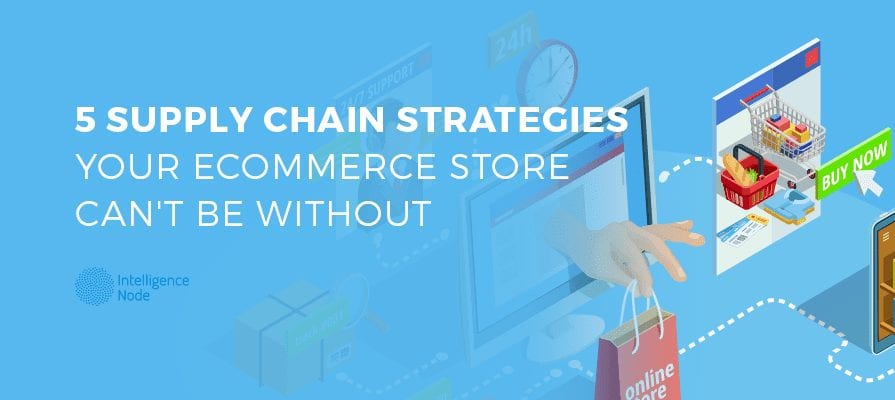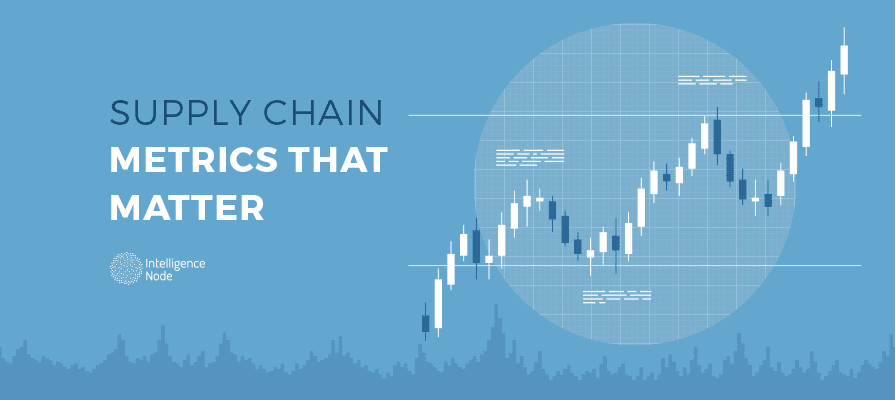Managing your supply chain is vital to your eCommerce store’s success. Businesses ranging from basement Etsy endeavors to multinational conglomerates must continually revisit their supply chain strategy. No matter how efficiently you think your business is running, a few supply chain tweaks can feel like a revolution in efficiency. And an efficient eCommerce supply chain strategy is the key to more profits, greater opportunities for expansion, and less stress.
Our Black Belt Guide to Optimizing Your eCommerce Supply Chain might just be the best thing to ever happen to your business’s supply chain (and bottom line). Looking for a quick refresher on getting your supply chain under control? Look no further. Here are five strategies that can help you rein in costs so that profits can rain from the sky.
Give Your Customers What They Want
In a cutthroat economy, the most successful businesses know what customers want, and consistently deliver it. Ditch your ideas about what customers should want. Stop trying to shape their desires. Look for a hole in the market, and then fill it.
Seems easy enough, but many businesses operate by inertia, doing the same thing over and over, completely oblivious to the fact that their customers want something different. Avoid being caught in a rut by:
- Consistently soliciting customer feedback, and taking what customers say seriously.
- Listening to complaints, both in-house and on other sites. Don’t argue with customers. Accept what they say and work to address it.
- Looking at what you’re doing right. Which items fly off the shelves? What do customers consistently request more of? Even if it’s an item you’d rather sell less of, your business will thrive if you cater to customer whims.
- Remaining on top of emerging trends. You shouldn’t force customers to like something they don’t, but you can offer them new products that will soon be the envy of the industry.
- Getting rid of inventory and other services that aren’t selling. Quit trying to market it and losing money. Trim the fat and watch the profits fly in.
- Seeking out holes in the market. Participate in consumer messages boards and advocacy organizations. Do specific themes consistently emerge? Is there a product customers crave but that’s not currently available? Be the business that fills the hole.
- Prioritize customer service. Businesses are increasingly outsourcing customer service, viewing it as a source of needless costs. But across industries, customers are quite clear on their needs: they want better, more effective customer service. Consider hiring fewer customer service reps and paying them a higher wage. This allows you to efficiently and affordably address customer concerns. An angry customer can do your business immense harm, and there is perhaps nothing more ire-inducing than useless customer service.
Cut Inventory Costs
Whether you’re a brick and mortar store with an eCommerce focus, or an exclusively web-based business, inventory costs money. Storage costs add up. So too do the costs of ordering new items, packaging and returning to the manufacturer items that don’t sell, and listing each and every product. Less inventory means fewer expenses and more opportunities for easy profit.
Every quarter, assess which of your products are and are not working. Ask yourself:
- Are we struggling to drum up interest in a failing product?
- Is there a product that consistently sells out?
- Which products get the best customer feedback?
- Which products get the most returns?
The market can rotate on a dime. Stay ahead of the curve by constantly assessing and reassessing your inventory strategy.
Get Your Operational Processes Streamlined and Under Control
Everything your business does — placing a phone call, ordering inventory, responding to customer complaints — is part of a larger process. Streamline these processes and watch your efficiency and profits soar. Schedule similar processes for the same time, and assign them to a single person to ensure consistency. For example, you might respond to customer complaints on a weekly basis, and ensure that your friendliest and most effective customer service representative is charged with this task.
List each of your operational processes, then assess new ways to streamline them. Can you use a computer program? Hire an expert in the field? Incorporate them into a larger process to save time?
Intelligently Outsource
Outsourcing can free time and money so that you can focus on the core components of your business. But if you outsource too much, or rely on the wrong service provider, your business will soon be in crisis. Rather than engaging in a cost-cutting race to the bottom, look at value when outsourcing — not just price. A person who hardly speaks English might charge very little for customer service. But how many customers will end up incensed and alienated?
Select which processes can easily be outsourced without compromising quality. You might be able to find a more affordable supplier, outsource shipping to a third party, or invest in software that does functions automatically that you once performed by hand. With each outsourcing decision, ask yourself whether the cost savings are worth any potential drawbacks, then carefully monitor your results.
Master Analytics and Performance Management
It seems like an obvious mistake, but busy business owners often throw money at a problem without ever bothering to follow up. Others refuse to spend money on anything, and watch as their business crashes into failure. You need clear performance analytics, including:
- Data about which advertising campaigns are working. If you use web-based ads, consider using Facebook or Google, which offer clear and specific feedback about each campaign.
- Details on whether your inventory costs are well-spent. Which items are selling, and which are simply collecting dust?
- Feedback from customers about the features they love, the bugs they loathe, and the information they wish they had.
- Generalized performance data over time. You need to know if your business is expanding or contracting, and how the money you spend relates to the profits you can expect.
Businesses routinely invest tens of thousands of dollars into new software, advertising, staff, and other expenditures that promise to earn them more money and produce happier customers. Yet few bother to assess whether their work is actually paying off. Why spend money if you don’t know what that money is getting you?





